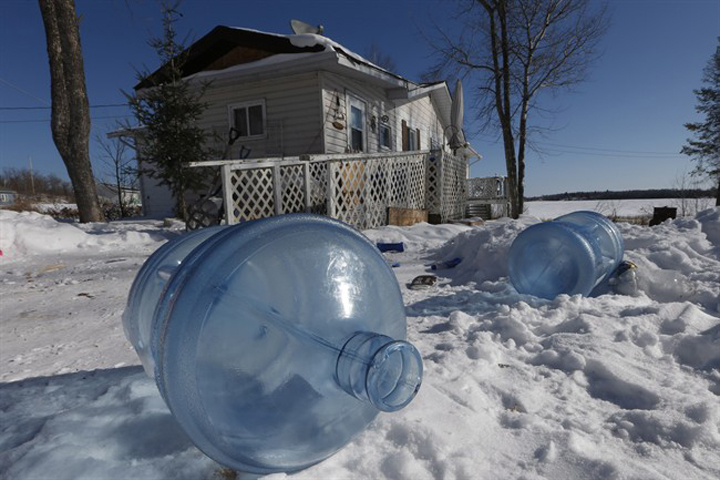SHOAL LAKE, Ont. – A century ago, the federal government expropriated land inhabited by the Shoal Lake 40 First Nation for construction of an aqueduct to provide water to the city of Winnipeg. Band members were moved onto a man-made island.

READ MORE: The price of Winnipeg’s water: A First Nation’s misery
That decision continues to have impacts to this day as residents risk their lives on dangerous ice roads and the community finds itself under one of Canada’s longest standing boil-water advisories.
A look at Shoal Lake 40 First Nation’s struggles, by the numbers:
15.2 — The width in metres of the diversion canal which turned Shoal Lake 40 First Nation land into a man-made island.
9 — The number of people locals can remember who have died by trying to cross the lake to the island in unsafe conditions.
$30 million — The estimated amount of money it would take to build an all-weather road connecting the reserve with the mainland.
17 — The number of years Shoal Lake 40 has lived under a boil-water advisory.
$100,000 — The amount of money the reserve spends a year on bottled water.
$15 million — The estimated amount of money it would take to build a water treatment plant.
270 — The number of people still living on the reserve.
30 — The percentage of the reserve’s population left on the man-made island
READ MORE: Shoal Lake 40 First Nation under boil water advisory for 17 years
- Green Party deputy leader given jail sentence for Fairy Creek old growth protests
- More financial institutes are offering crypto-services, survey shows
- Singh mulls TikTok return as U.S. nears potential ban over security fears
- EV sales in Canada rose in recent years despite higher interest rates. Why?



Comments